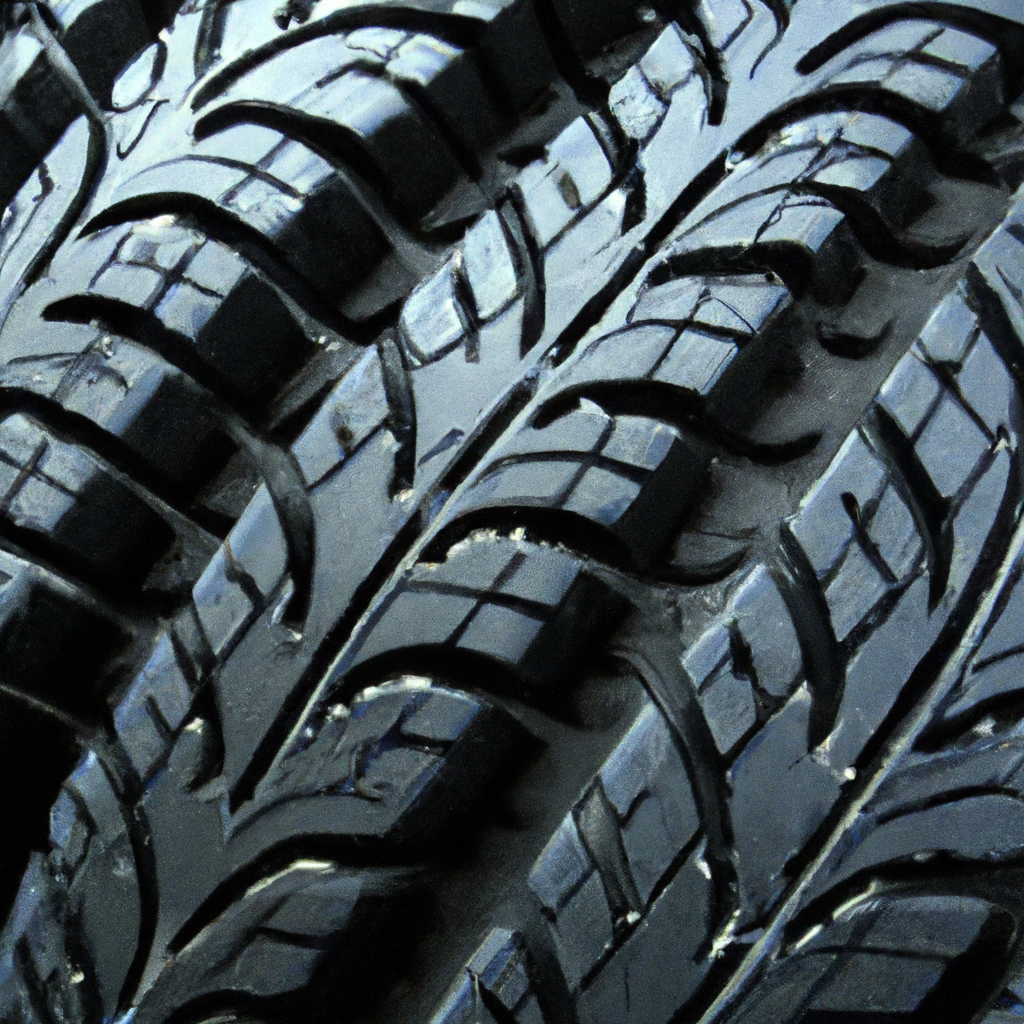Did you know that when it comes to winter tires, there are actually different types of compounds used? Yes, that’s right! Whether you’re a seasoned driver or a new one, understanding the various types of winter tire compounds can help you make a more informed decision when it comes to ensuring your safety on icy roads. In this article, we will explore the different types of compounds used in winter tires and how they can affect your driving experience. So, let’s get ready to hit the road with confidence this winter season! Yes, there are different types of winter tire compounds that are specifically designed to provide better traction and handling on snow and ice-covered roads. In this article, we will explore the various types of winter tire compounds available and discuss their benefits and limitations. Whether you’re driving in extreme winter conditions or simply looking to improve your vehicle’s performance in the cold season, understanding the different tire compounds can help you make an informed decision. Let’s dive in!
Rubber Compounds
Rubber compounds are the most common type of material used in winter tires. These compounds play a crucial role in determining the tire’s grip and flexibility in cold temperatures. There are two main types of rubber compounds used in winter tires: natural rubber and synthetic rubber.
Natural Rubber
Natural rubber is derived from the latex sap of rubber trees. It is known for its excellent elasticity and grip on icy and snowy surfaces. Winter tires made with natural rubber compounds provide superior traction and handling in cold conditions. They remain pliable even at low temperatures, allowing the tire to maintain contact with the road.
Synthetic Rubber
Synthetic rubber is a man-made material that is designed to mimic the properties of natural rubber. It offers similar performance characteristics but provides additional benefits such as improved tread life and fuel efficiency. Winter tires made with synthetic rubber compounds are durable and offer excellent grip on icy and snowy roads.
Silica Compounds
Silica compounds are a type of rubber compound that contains finely ground silica particles. These particles help to enhance the tire’s grip on wet and icy surfaces, making them especially effective in winter conditions. Silica compounds are often combined with other rubber compounds to create a balanced tire that performs well in a variety of conditions.
Benefits of Silica Compounds
Silica compounds offer several key benefits for winter driving. Firstly, they improve traction on wet and icy roads, reducing the risk of slippage and accidents. Secondly, they enhance braking performance, allowing you to stop your vehicle more effectively in snowy or icy conditions. Lastly, silica compounds help to reduce rolling resistance, which can improve fuel efficiency and prolong the tire’s lifespan.
Silica Compound Tires for Winter Conditions
If you frequently drive in extreme winter conditions, tires with silica compounds are a great choice. They provide excellent traction and handling on icy and snowy roads. However, it’s important to note that silica compound tires may not be as effective in very cold temperatures, where studded or non-studded tires may offer better performance.

Studded Tires
Studded tires are specifically designed for icy and hard-packed winter roads. These tires have metal studs embedded in the tread pattern to enhance traction and grip. Studded tires are particularly effective in regions with frequent ice and heavy snowfall.
Advantages of Studded Tires
The main advantage of studded tires is their exceptional grip on icy surfaces. The metal studs bite into the ice, providing enhanced traction and stability. Studded tires can significantly reduce stopping distances and improve overall control while driving on icy roads. They are especially beneficial for those who live in areas with extreme winter conditions and encounter icy roads on a regular basis.
Drawbacks of Studded Tires
While studded tires provide excellent traction on ice, they have some drawbacks to consider. Firstly, they can be noisy and cause increased road noise, which can be bothersome for some drivers. Secondly, studded tires can cause damage to road surfaces, particularly when driving on bare pavement. In some regions, studded tires are even prohibited due to their potential to damage roads.
Non-Studded Tires
Non-studded tires, also known as studless tires, are designed to provide similar performance to studded tires without the use of metal studs. Instead, they rely on advanced tread patterns and rubber compounds to deliver excellent grip on snow and ice.
Advantages of Non-Studded Tires
Non-studded tires offer several advantages for winter driving. Firstly, they are quieter compared to studded tires, providing a more comfortable driving experience. Secondly, they are more versatile as they can be used on both icy and dry road conditions, unlike studded tires. Finally, non-studded tires do not cause damage to road surfaces, making them a more environmentally-friendly choice.
Drawbacks of Non-Studded Tires
While non-studded tires offer many benefits, they do have some drawbacks to consider. One of the main drawbacks is that they may not provide the same level of traction as studded tires on extremely icy surfaces. Additionally, non-studded tires may wear down more quickly when used on dry roads, so it’s important to monitor the tread depth regularly.

All-Season Tires
All-season tires are designed to provide satisfactory performance in a variety of weather conditions, including light snow and cold temperatures. They are a popular choice for drivers who want a tire that can be used year-round without the need for frequent changes.
Suitability for Winter Conditions
While all-season tires can handle light snow and cold temperatures, they may not provide the same level of traction as dedicated winter tires. All-season tires are typically made with a rubber compound that provides good grip in a wide range of temperatures. However, they may not have the specialized tread pattern and compound necessary to tackle more severe winter conditions.
Limitations of All-Season Tires
One of the main limitations of all-season tires in winter conditions is their reduced traction on icy and snowy roads. They may not have the necessary grip to safely navigate these surfaces, increasing the risk of accidents. Additionally, all-season tires may wear down more quickly if used extensively in winter conditions, as the rubber compound is not optimized for extreme cold.
Factors to Consider
When choosing the right tire compound for winter driving, there are several factors to consider. These factors will help you determine which tire compound will provide the best performance and safety for your specific needs.
Road Conditions
Consider the typical road conditions you will encounter during the winter months. If you frequently drive on icy or snowy roads, studded or non-studded tires may be the best choice. However, if you mainly drive on dry or wet roads with occasional light snowfall, all-season tires may be suitable.
Temperature Range
The temperature range in your area is another important factor to consider. If you experience extremely cold temperatures, studded or non-studded tires with specialized compounds may offer better performance. In milder winter climates, all-season tires may be sufficient.
Driving Style
Your driving style can also influence the tire compound you choose. If you drive aggressively or frequently take corners at higher speeds, a tire compound with enhanced grip and handling characteristics may be ideal. Conversely, if you have a more relaxed driving style, a tire with a focus on comfort and fuel efficiency may be more suitable.
Budget
Lastly, consider your budget when selecting a tire compound. Winter tires tend to be more expensive than all-season tires, but they offer superior performance in winter conditions. Consider the value and benefit that each tire compound offers and determine which option best fits within your budget.

Choosing the Right Tire Compound
Choosing the right tire compound for your winter driving needs can be challenging. It’s essential to consider the factors mentioned above and consult with a tire expert if you are unsure. A tire expert can assess your specific driving requirements and recommend the best tire compound based on your needs and budget. Their expertise and knowledge can help ensure you make an informed decision and choose a tire that will keep you safe on winter roads.
Conclusion
In conclusion, there are several types of winter tire compounds available, each with its own set of advantages and limitations. Rubber compounds, such as natural and synthetic rubber, provide excellent grip and flexibility in cold temperatures. Silica compounds enhance traction on wet and icy surfaces, making them beneficial for winter driving. Studded tires offer superior grip on icy roads but can be noisy and cause damage to road surfaces. Non-studded tires provide similar performance without the use of metal studs and are a more versatile and environmentally-friendly option. All-season tires are suitable for light snow and cold temperatures but may not provide optimal performance in severe winter conditions. When choosing the right tire compound, consider factors such as road conditions, temperature range, driving style, and budget. Ultimately, consulting a tire expert will help you make an informed decision and ensure your safety and satisfaction on winter roads. Stay safe and enjoy your winter driving experience!


